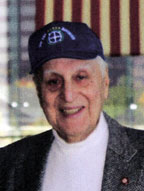Craig Schoeller became interested in the Civil War at the time of the Centennial (1961-1965) when he read all of Bruce Catton’s books. In following years he visited most of the battlefields from Gettysburg, Antietam, Chickamauga, and to Atlanta. Later he set foot at Shiloh, Vicksburg, and Post Hudson. With the passage of time he became less interested in battle details and more attracted to human interest and people’s actions and interactions.
He is also interested in World War II and had served in the U.S. Army. He went overseas as an infantry replacement and joined the 35th Division of the Third Army just before the Ardennes battle.
His unit attacked from 12 miles Southeast of Bastogne and after a few miles was hit by heavy 88mm fire. Advancing into woods they were met by small arms fire and mortars. There were a lot of casualties. Craig helped assist a medic attend his best friend who was hit in the chest and both legs. Craig was also hit with in the right thigh by two pieces of shrapnel. After being pinned down by heavy machine gun fire, he crawled away. Upon returning to their line of defense it was too dark and dangerous to attempt to reach the aid station, so he tried digging a foxhole in the snow covered, frozen and rocky ground. He dug all night and by dawn was only down about three and one half feet—enough to save him from a heavy mortar barrage. When it let up, he started to crawl, dragging his wounded leg. After about 150 yards, by luck the Captain came along in a jeep and took him back to the aid station, which came under heavy artillery fire.
The pieces of shrapnel that lodged next to the bone were removed at a field hospital in Longuy, France. From there he went by hospital train to a hospital in Commercy, France. When the hospital cleared out of walking wounded in January 1945 he left with a bandage and a limp.
He rejoined his unit along the Roer River. His leg had become so weak that he had difficulty keeping up with the column and gradually drifted to the rear. Than he would get a jeep or truck lift to the front of the column and the process would be repeated. It took a while to regain the strength back in his leg.
Of the 180 men who left Metz in late December 1944 he could only recognize a third of them. The rest of the ranks were filled with replacements and returned wounded. He was the only surviving member of his squad.
Craig was captured near the Rhine River on March 6, 1945. His tank column with infantry riding ran into an ambush and was cut off. During the capture we were under fire by our own 105’s and 155’s, being bombed by British Mosquito Bombers on the banks of the Rhine, bombed by P47’s, and B17’s in Osanbruck, Germany, he arrived at Stalag 118 located between Bremen and Hannover, Germany.
It was a tough two months and he was happy to be liberated by the British 7th Armored Division, veterans of El Alamein, the “Desert Rats”. He flew to Brussels, Belgium, on an RCAF C-47, then by train to Namur, Belgium, and G.I. hands. It was then to Camp “Lucky Strike” and ship transport home. He was sent to Fort Bragg for more training—the invasion of Japan. The war ended as they were still in training and he spent the rest of his Army days as an Administrative NCO at Fort Dix.
He completed his college education, earning his Bachelor and Master degrees in Mechanical Engineering. His career was with a company that manufactured industrial drying and heat process equipment. He spent 35 years in Engineering, Sales, Management, and Marketing.

